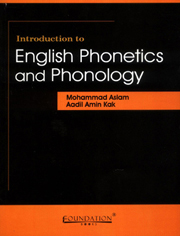4 - English Syllable Structure
Published online by Cambridge University Press: 26 October 2011
Summary
Every language manifests a particular way of combining its sounds to form meaningful words or parts of words, called syllables. Each language puts certain restrictions on these possible combinations. For example, in English we can't have a word which begins with a consonant sequence bfj, zbf or tzp. When we analyse what restrictions (and regularities) are found in the language under study, we are studying the syllable structure of that language. We can divide words into one or more syllables. For example, tin has one syllable, brother has two, important has three and computer has four syllables each.
A syllable is a group of one or more sounds. The essential part of a syllable is a vowel sound (V) which may be preceded and/or followed by a consonant (C) or a cluster of consonants (CC or CCC) (see below). Some syllables consist of just one vowel sound (V) as in I and eye/ai/, owe/ə/. In English, a syllable can consist of a vowel preceded by one consonant (CV) as in pie/pai/, or by two consonants (CCV) as in try/trai/, or by three consonants (CCCV) as in spry/sprai/. The vowel of the syllable may also be followed by one consonant (VC) as in at/æt/, or by two consonants (VCC) as in its/its/, or by three consonants (CVCCC) as in text/tekst/or by four consonants (CVCCCC) as in texts/teksts/.
- Type
- Chapter
- Information
- Introduction to English Phonetics and Phonology , pp. 60 - 68Publisher: Foundation BooksPrint publication year: 2007



